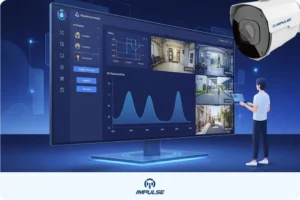Thermal cameras: The silent force fighting the pandemic
Before the thermal camera, access control was limited to identification and the assurance that the entrant was not exposed. As we all know, often one can be coming down with a virus in the viral stage and not know it themselves, complicating the matter a hundredfold.
Due to the pandemic, this all became much more complicated because of the severity and wide spread of the virus. It became vital to know whether the people entering your premises were or were not infected for the world at large’s safety.
The saving grace of thermal cameras has been that they are a non-contact, very quick way to take an entrant’s temperature and determine if they are viral. This means early detection, lessened spread and a whole lot of problems solved.
A regular camera works the same way the human eye does, visible light energy hits a surface, bounces off it, a detector receives the reflected light, and then turns it into an image. As light and heat are on the same spectrum, it works in a similar way but thermal cameras detect heat. They detect infrared energy and use the data to create images through digital or analog video outputs.
A thermal camera is made up of a lens, a thermal sensor, processing electronics and mechanical housing. They can detect tiny variations in temperature, a little as 0.01°C, and display them as shades of color
Typically the (warmest) parts of the image display as white, intermediate temperatures reds and yellows, and the (coolest) parts black. The image is often a stunning display of color.
Originally developed for military use, there is now a wide range of uses for thermal cameras, the one of primary concern currently is access control and limiting the spread of COVID. Thermal imaging cameras are installed in luxury cars to aid the driver with night vision. They are used in the construction industry, meteorology and in the power generation sector. A thermal camera was first built into a smartphone in 2016.
There are two primary forms of thermal camera, one with cooled infrared image detectors and one with uncooled infrared image detectors. The uncooled varieties are better as they don’t require bulky, expensive, energy consuming cryogenic coolers, they are smaller and more cost effective.
Impulse CCTV & PoE Switching is a market leader in Industrial Grade Video Surveillance and Networking Systems, offering unparalleled quality and personal verification on each product to ensure the best possible end system for our partners. We are high-risk critical infrastructure experts that service hospitals, large educational campuses, stadiums and more.
Please view the Impulse Thermal Camera Suite here.




